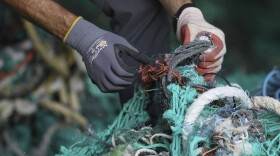After mounting criticism, the state Department of health has scaled up its contact tracing efforts. It includes a streamlined process with new protocols in the contact tracing method.
The department of health took the advice of lawmakers and health care experts to use the Hawaii Convention Center for contact tracing.
Health Director Bruce Anderson reported that each room at the convention center can house up to 50 tracers.
“We now have a total of 96 individuals working on contact tracing and investigations here on Oahu, 13 additional staff are providing supervision and other services. We have another 30 staff working on Maui, Hawaii and the Big Island all actively involved in contact tracing there,” he said.
“Last month, we began working on identifying a location to house additional workers. We have a number of staff in our main building, Kinau Hale, the Federal Credit Union has also been utilized. We have staff working at home. We have public health nurses and others working as contact tracers. This situation is a wonderful opportunity for us to expand the capacity to be able to hire more people to to build our contact tracing teams.”
He explained that the convention center will also be used to train more contact tracers.
Dr. Emily Roberson who heads the program said she’s made changes like focusing investigations on particular groups.
“The first group includes those that are in high risk occupations like healthcare workers. The second group are those in high risk settings, such as long term care facilities, correctional facilities, public housing complexes, homeless or transitional shelters and schools including after school programs,” she said.
“The third group are those that are considered high risk individuals. This would include those that are older than 65 years old, and those with certain chronic conditions like severe lung disease, a compromised immune system, severe or uncontrolled diabetes or multiple chronic conditions. The last group are those who are sick, meaning they have symptoms versus asymptomatic cases.”
However, Tim Brown, an infectious disease expert at the East-West Center, noted that contact tracing that does not contact everyone, but instead only prioritizes more vulnerable groups will not produce great results.
“It's going to be of limited effectiveness at that point,” he said.
“Good contact tracing can do a really great job in terms of both identifying those source infections, and the same time identifying those who basically are going to result from the current infection. That's really critical if we're going to stop the chains of transmission because if we don't stop the next person from getting infected, they're going to infect another one or two people and the train will just continue.”
Roberson said DOH will still be attempting to contact people outside of the priority groups, but it will be dependent on case loads as the department attempts to expand the contact tracing program.
“Prioritization groups are not meant to be the only people that we're following up on. They're just the ones that we are flagging immediately and kind of moving to the top of the pile on any given day,” she said.
“It's really dependent on the case volume that's coming in on a certain day of how much that prioritization even would play out in a regular setting. The goal is to contact everybody, but the prioritization is there as we're ramping up, just to make sure that we're directing all of our efforts in a way that is most likely to prevent these population level outcomes like outbreaks and clusters from occurring.”
As of Wednesday, there were 3,632 active COVID-19 cases. DOH’s contact tracing capacity with 126 tracers is 2,520.
Another adjustment Roberson implemented is no longer requiring contact tracers and investigators to do "clerical tasks" such as finding infected people a place to isolate if they cannot do so at home. Those tasks will now be handled by social workers in DOH’s Behavioral Health Division.
A DOH spokesperson said on Oahu the DOH is using three hotels plus a temporary quarantine and isolation center. However, those who have the means to isolate themselves are encouraged to do so.
It is up to DOH investigators to determine whether COVID-19 cases meet the criteria to be placed in one of the hotel options. That decision happens during the contact tracing process.
She said the department will now capture data in a simplified form and only, “actionable data that can actually be used to make informed decisions.” She did not elaborate on what specific data that would be.
Anderson noted that DOH wil receive about $50 million of federal funding over a 30 month period to aid COVID-19 efforts. $2.5 million was used to train 400 contact tracers through the University of Hawaii and at least 10 million will be used to upgrade the state laboratory.




